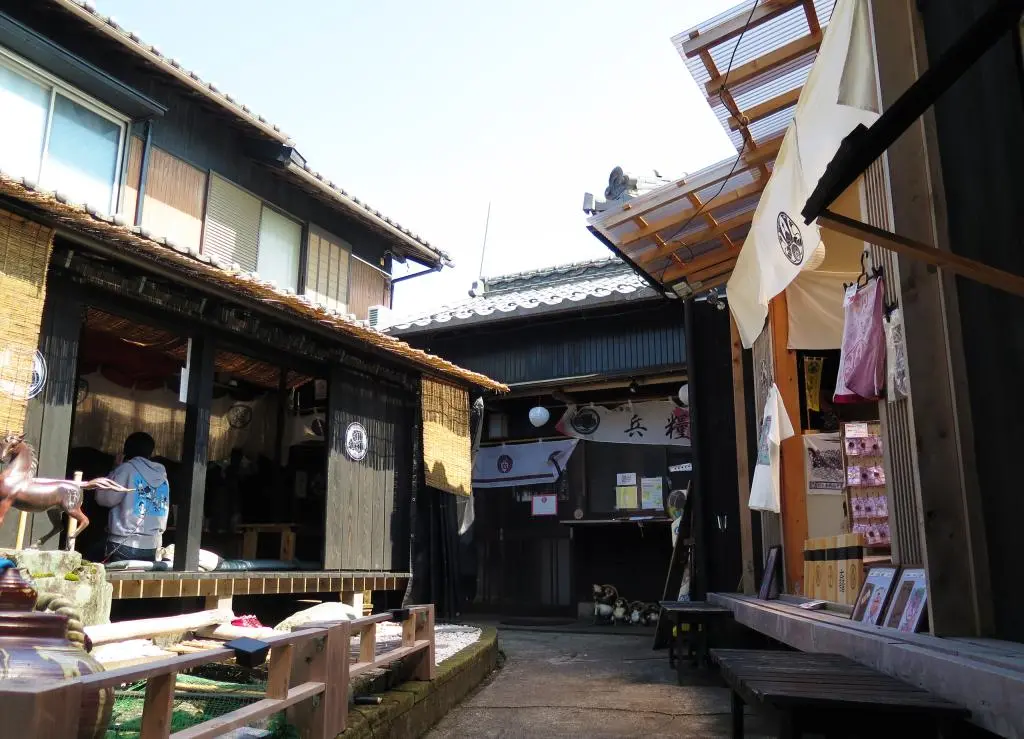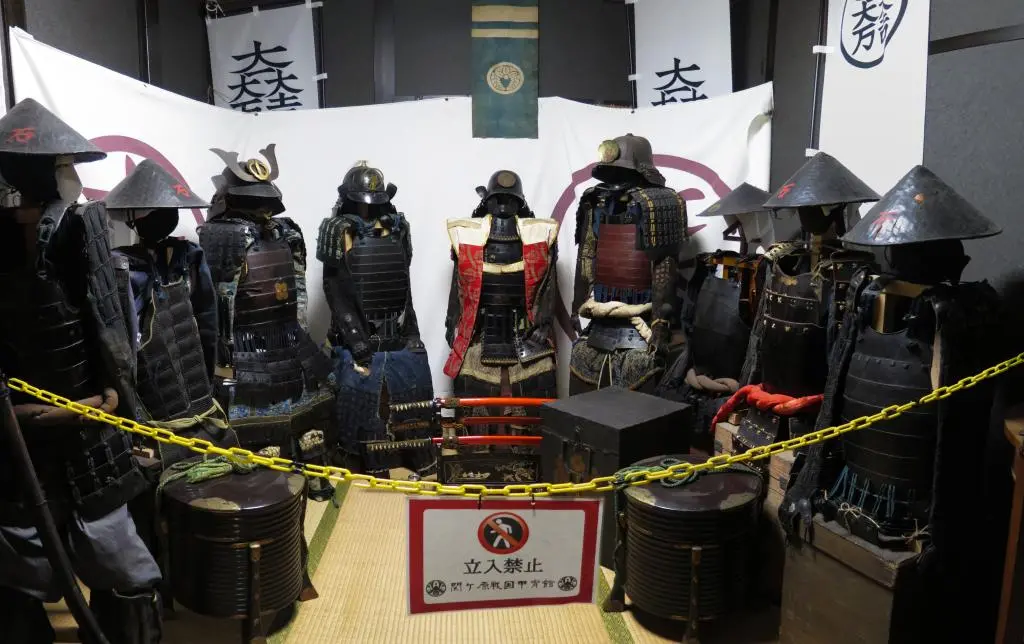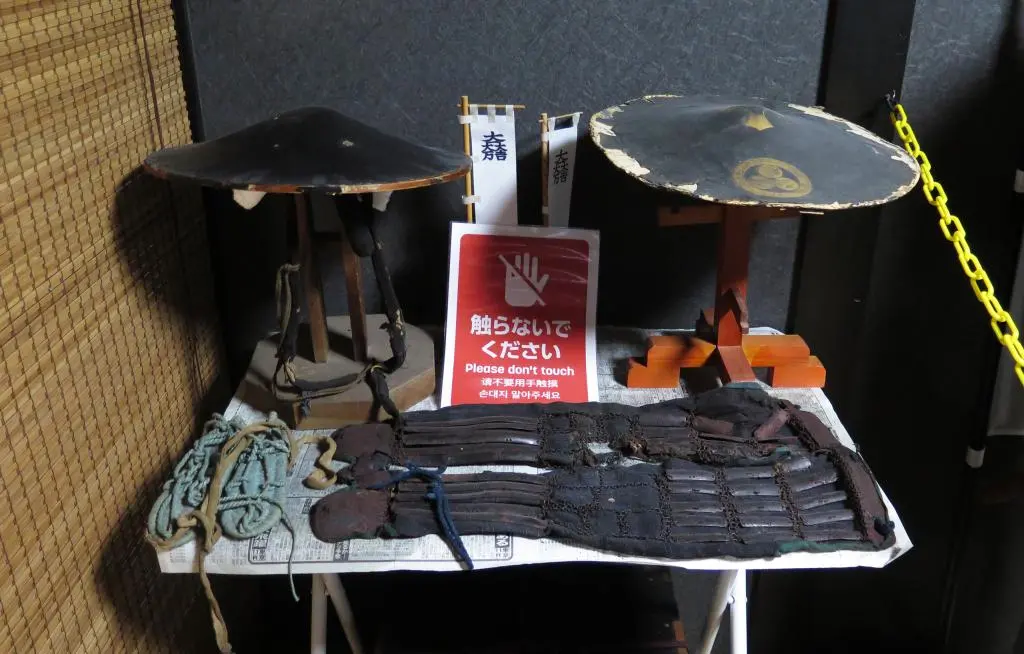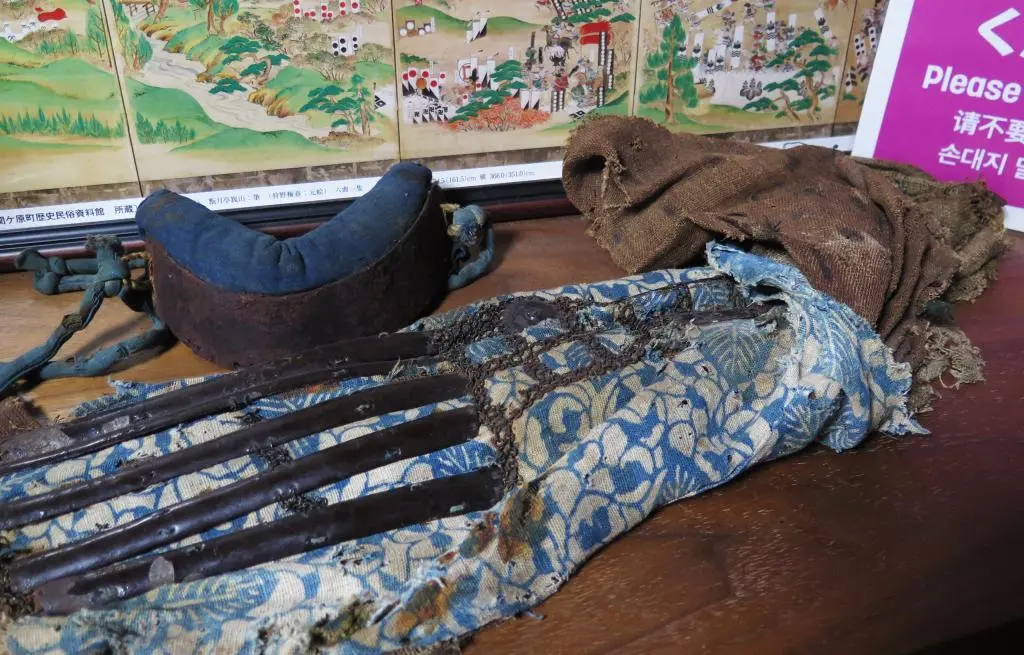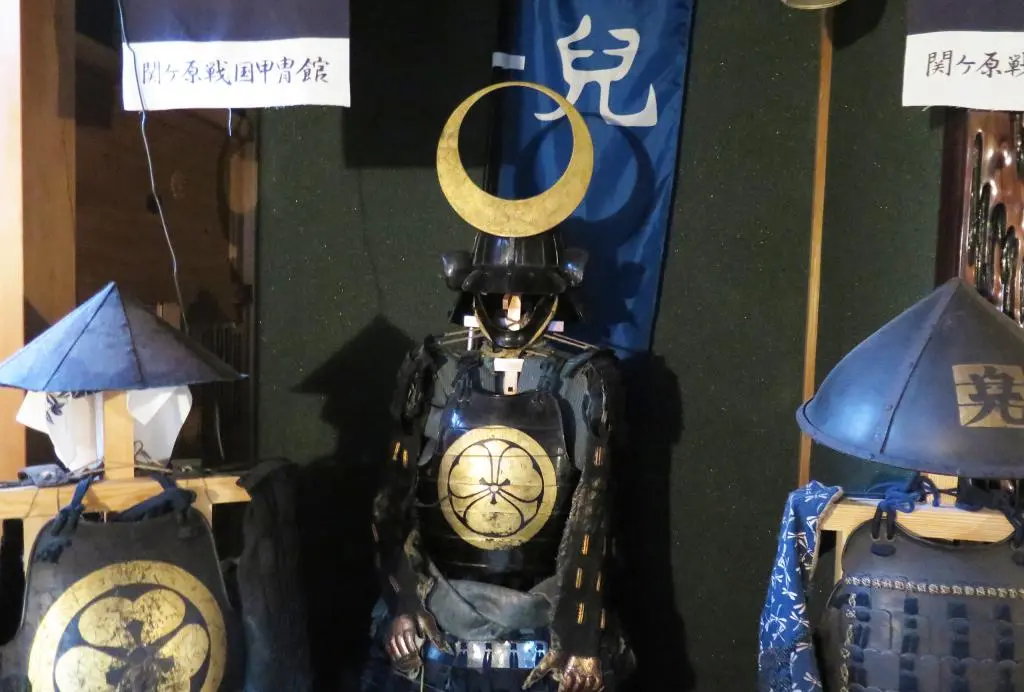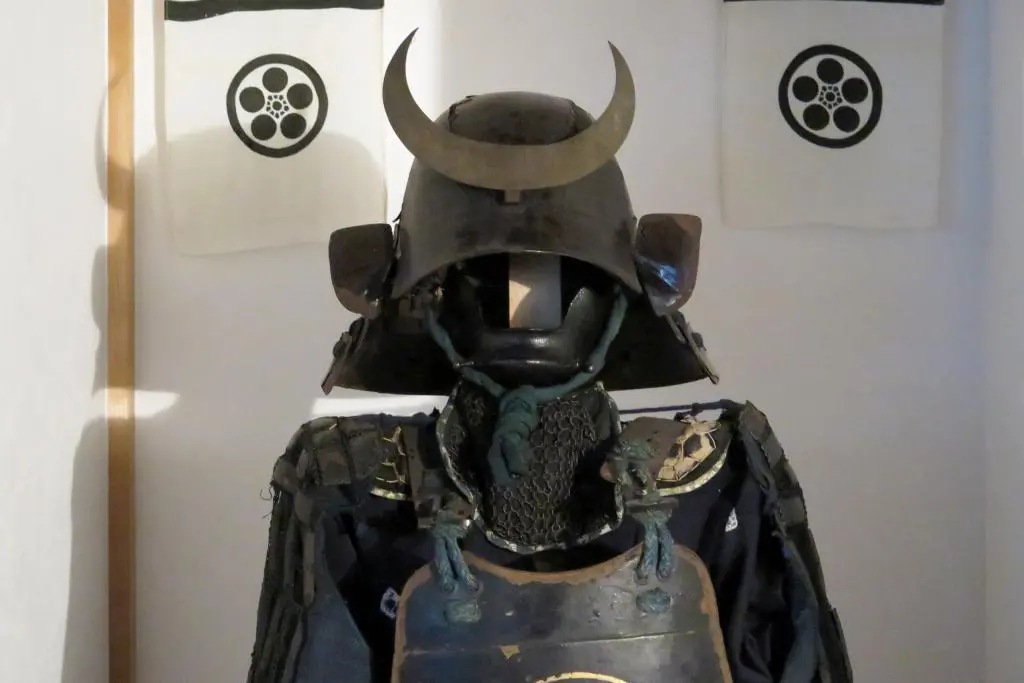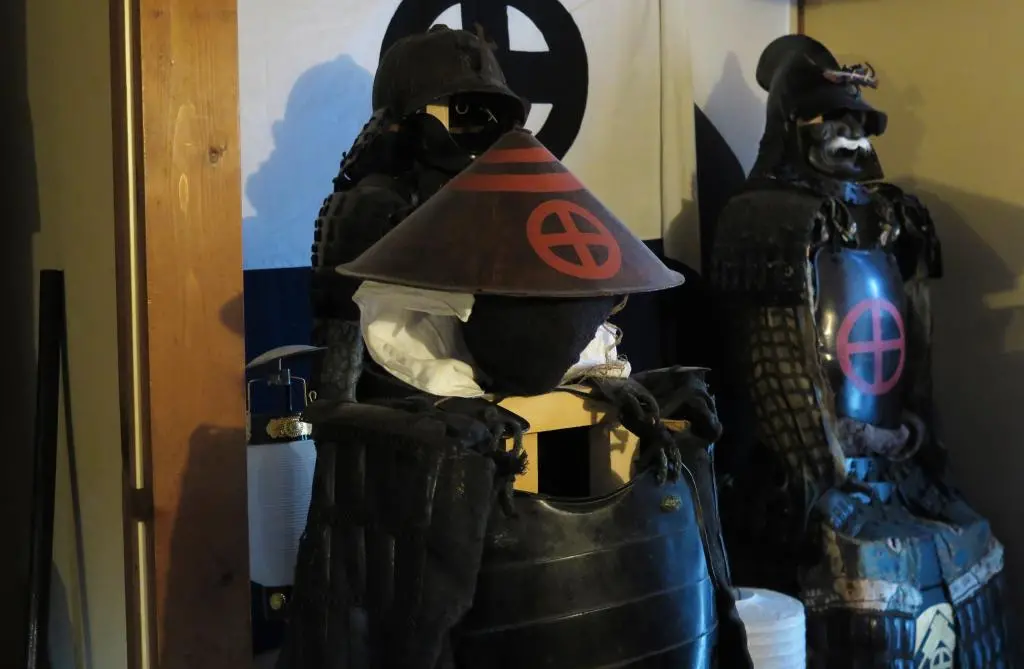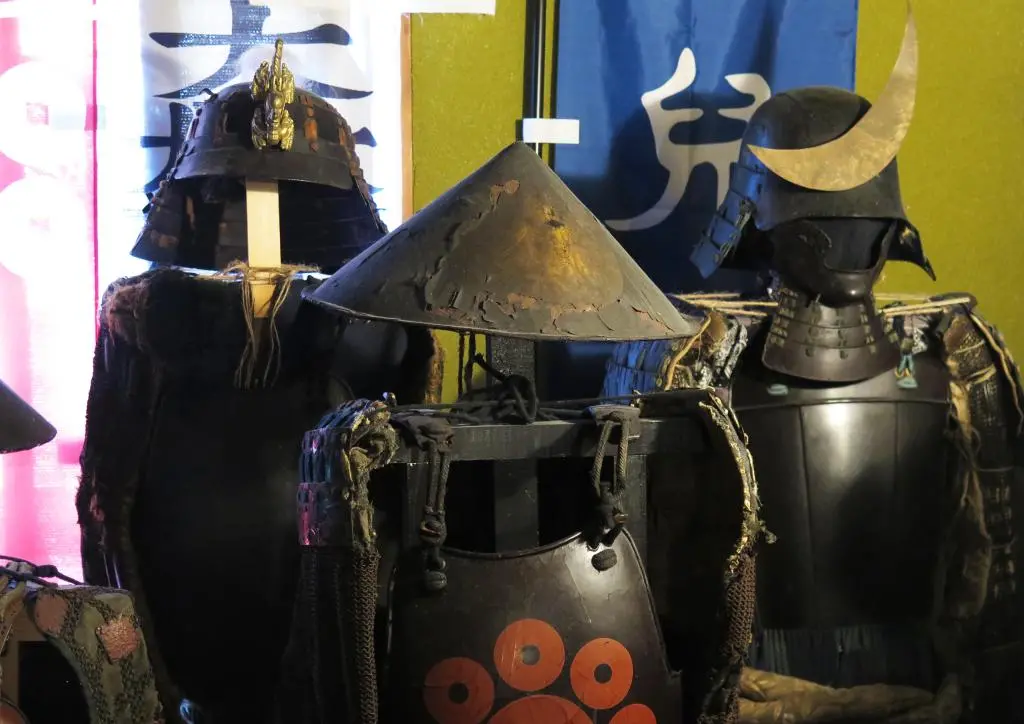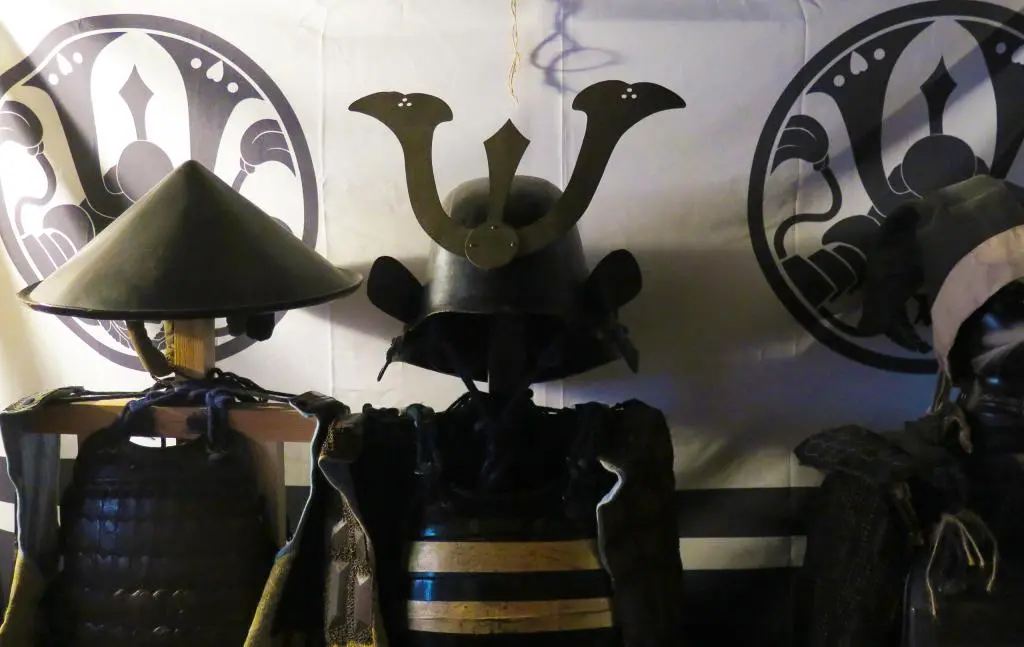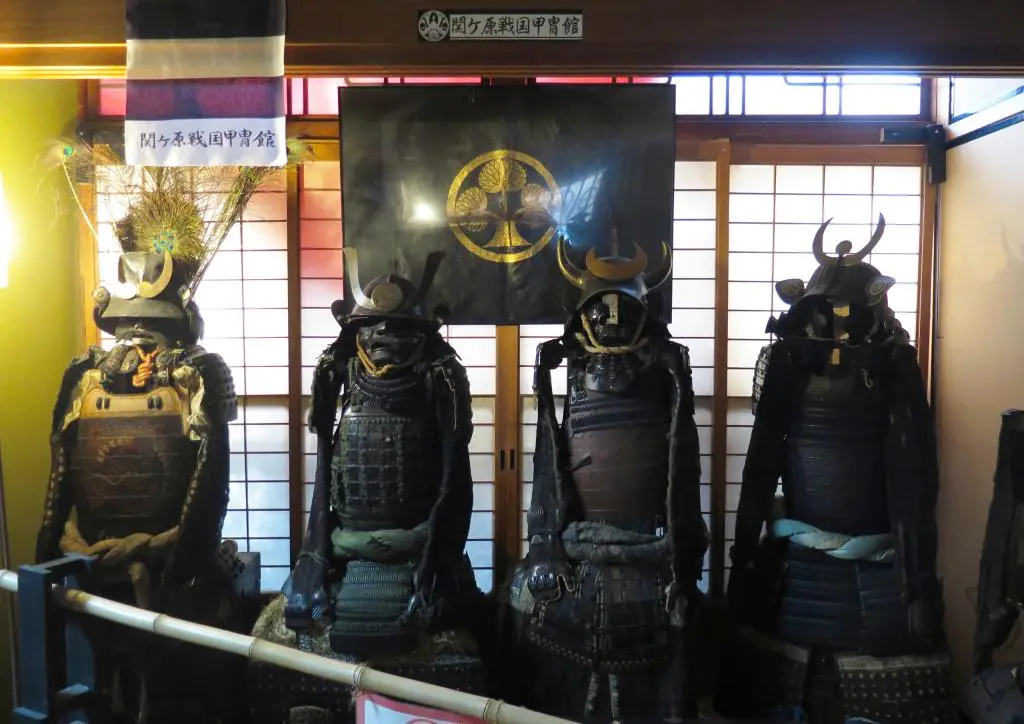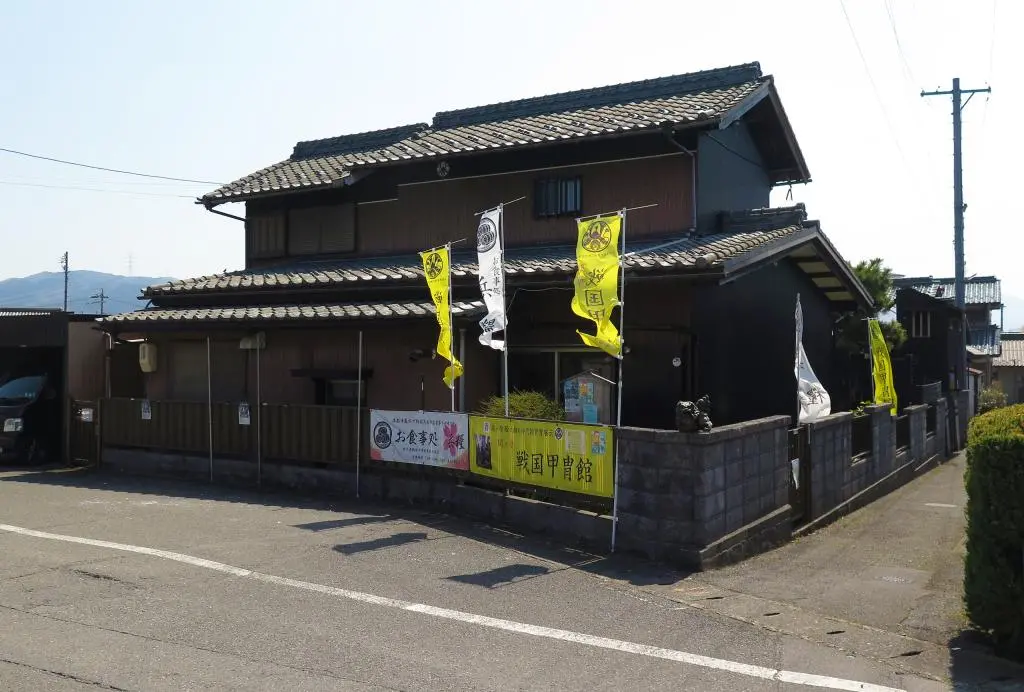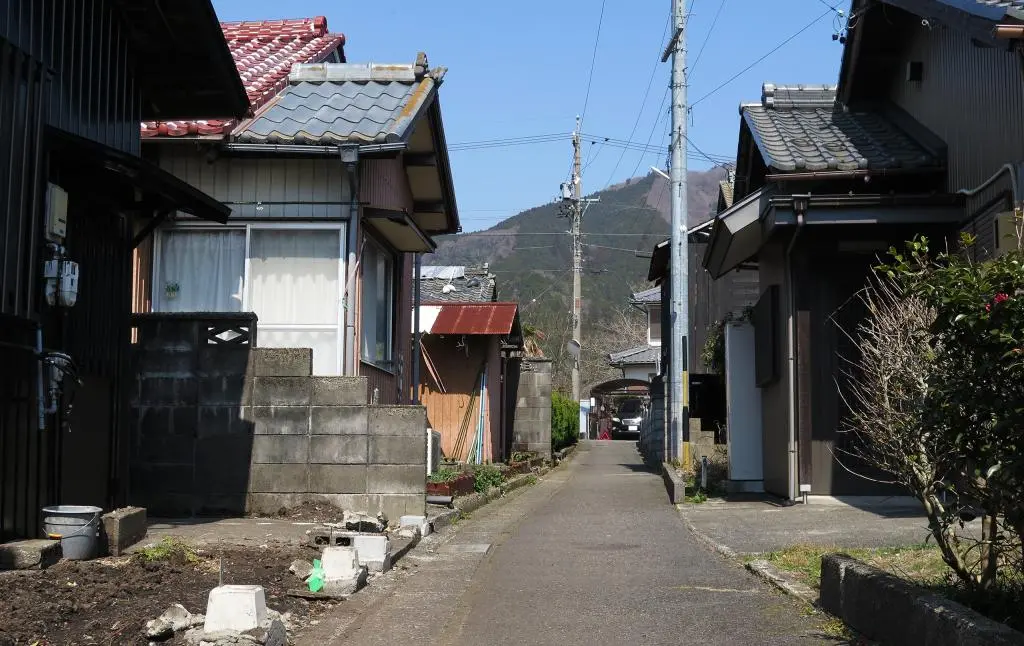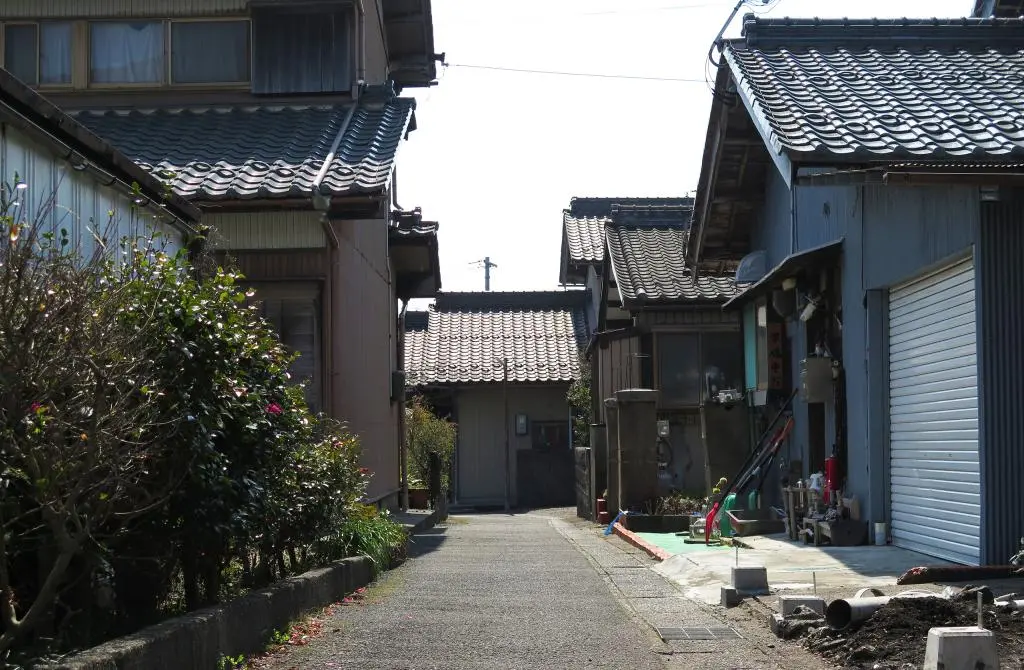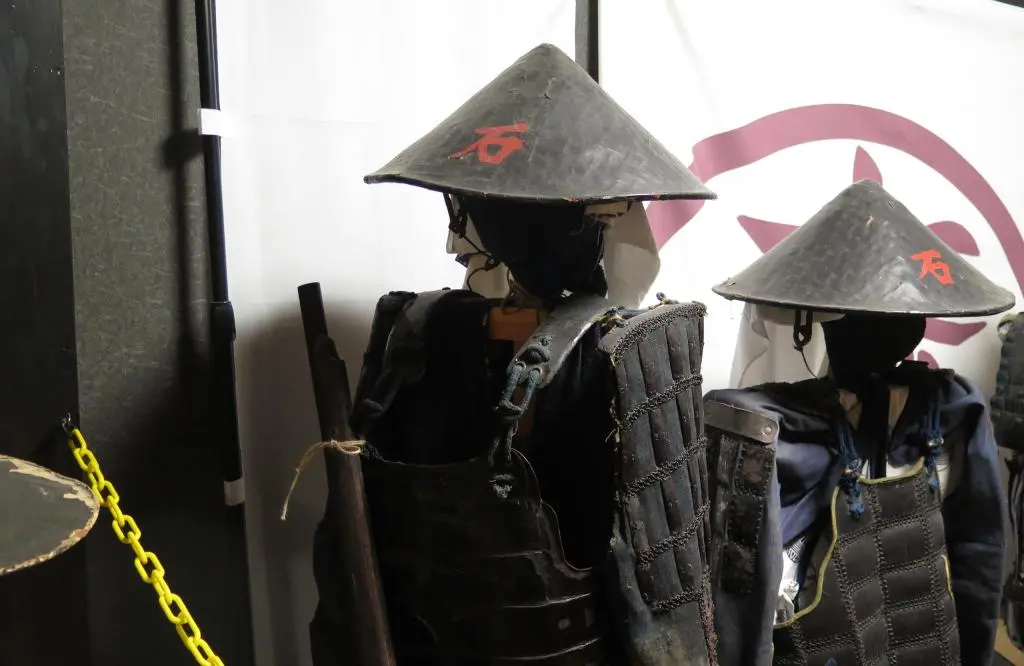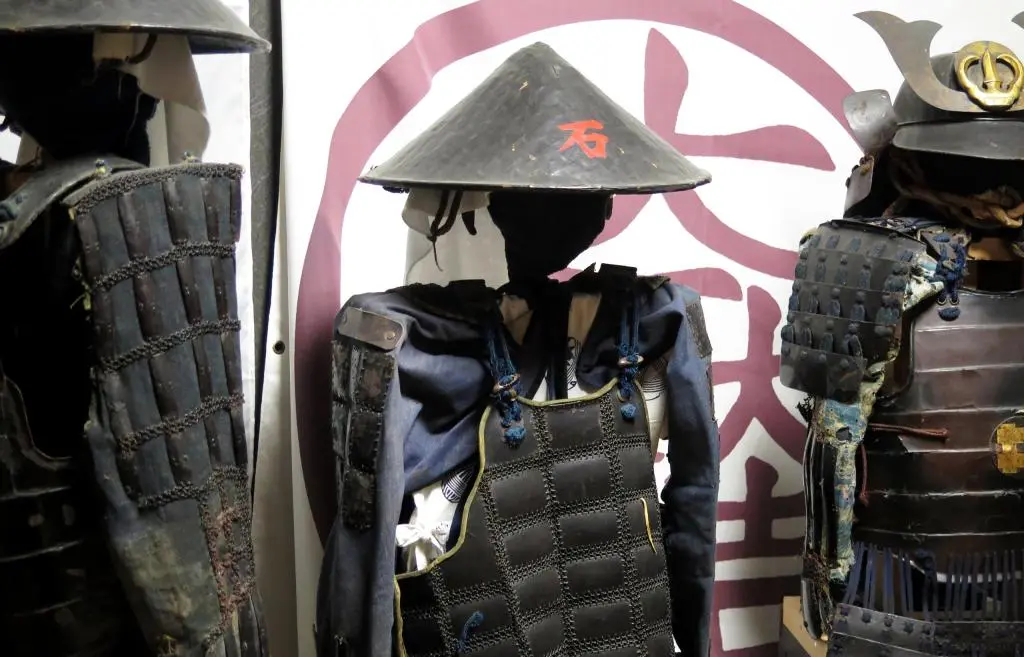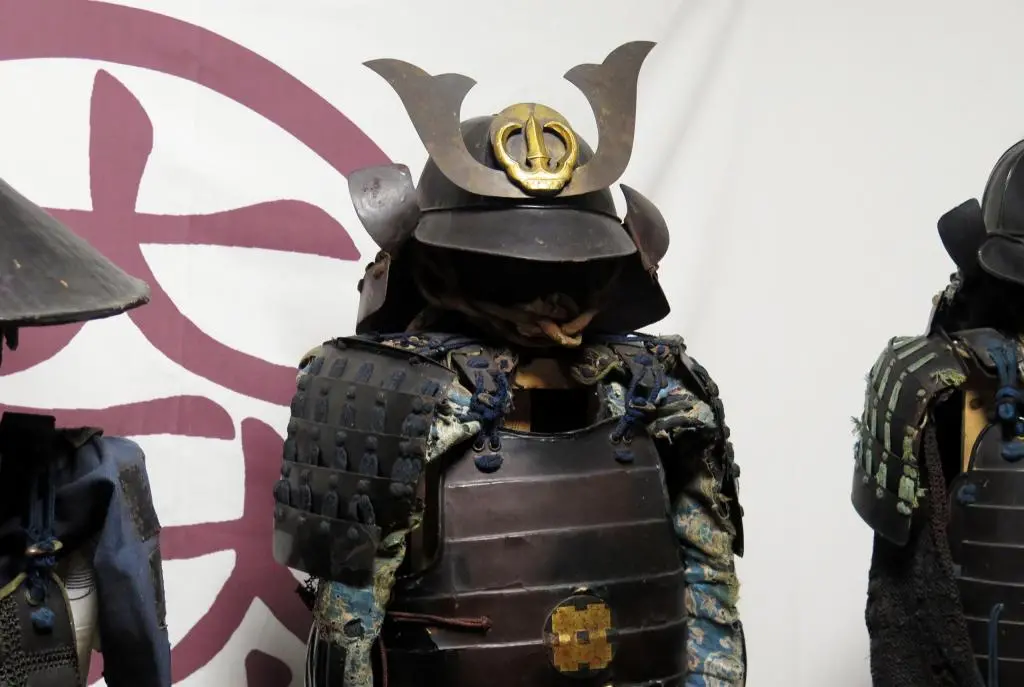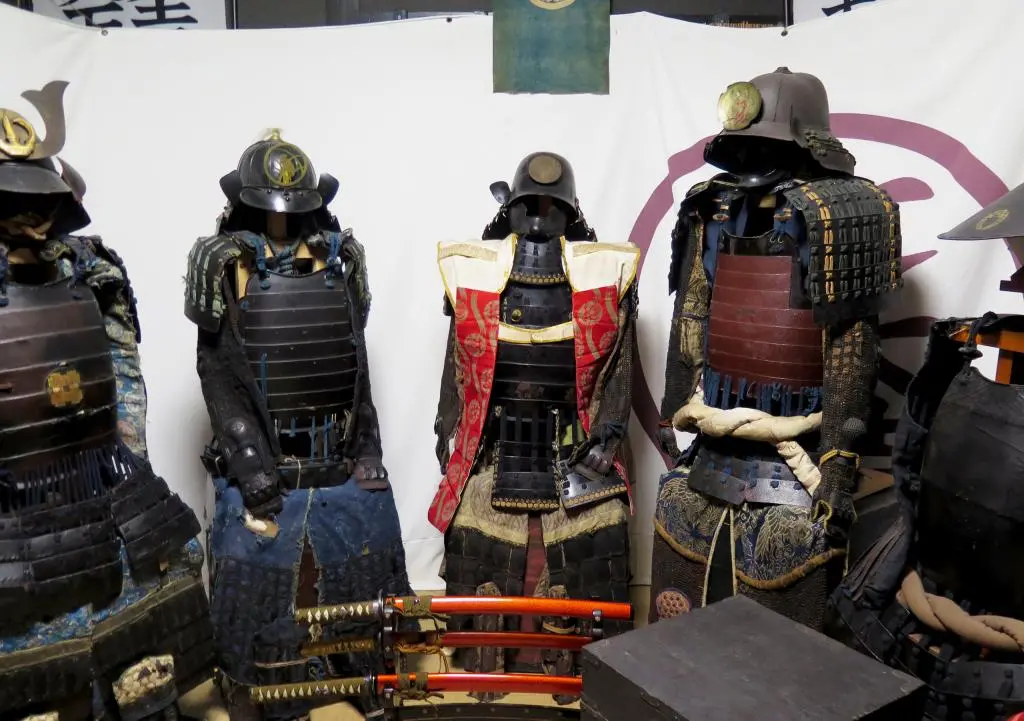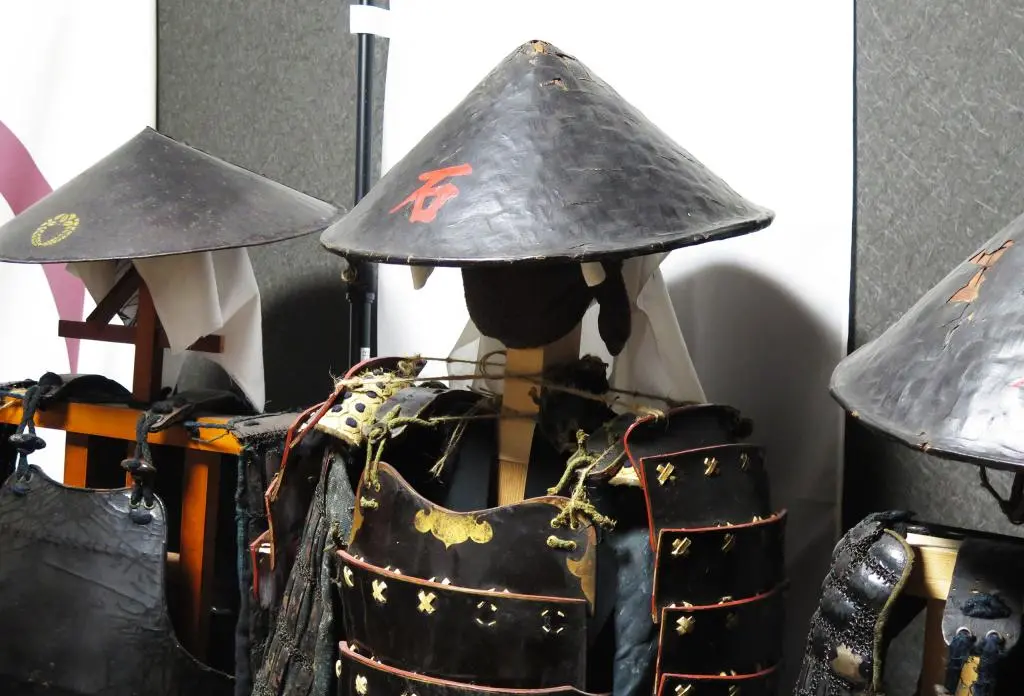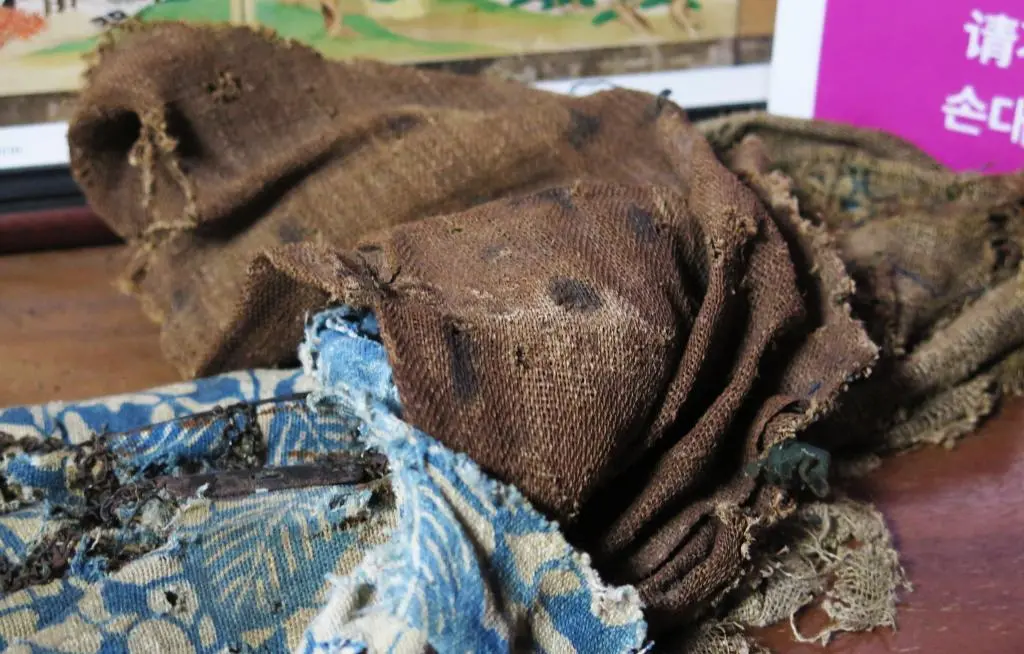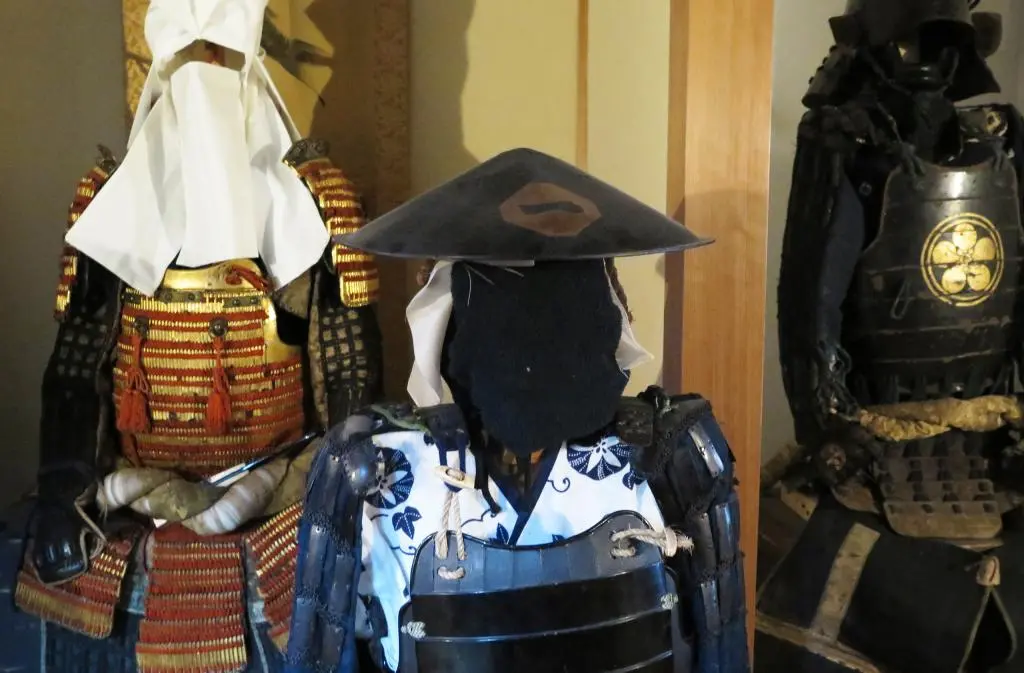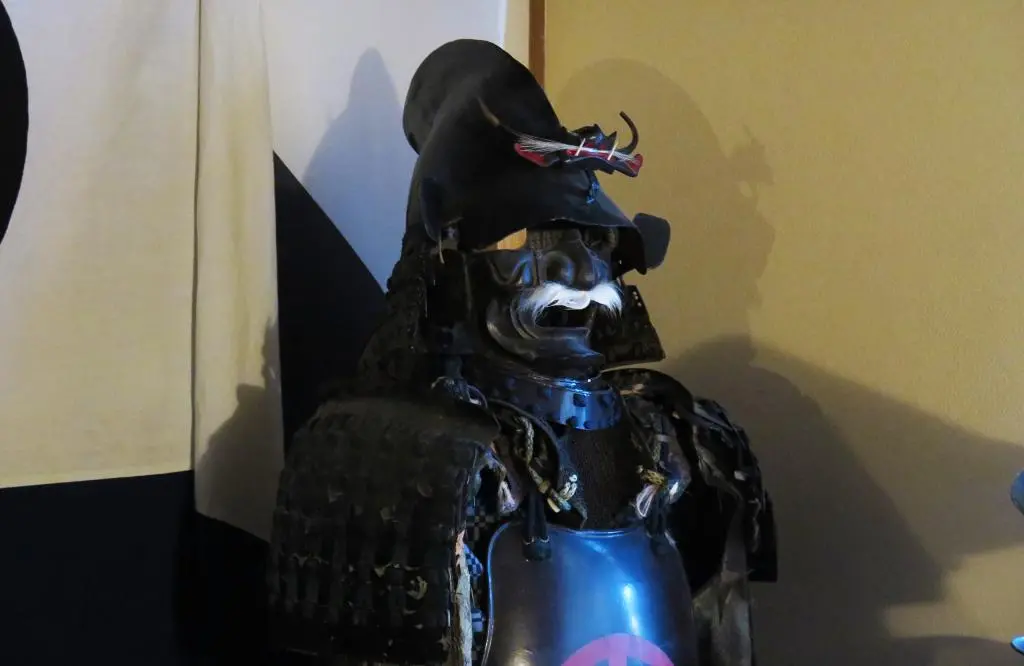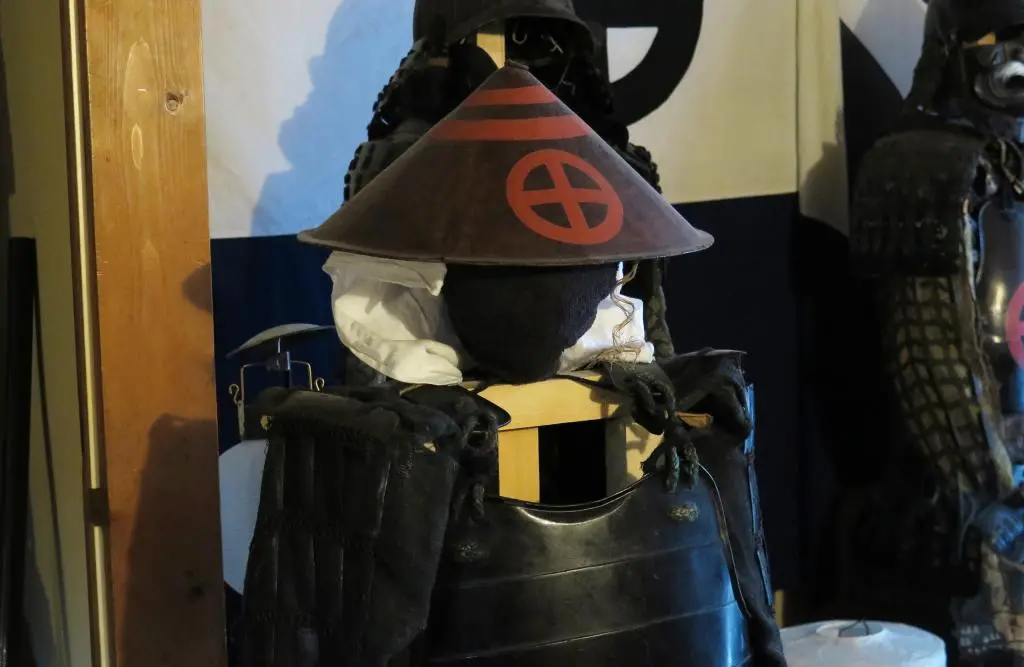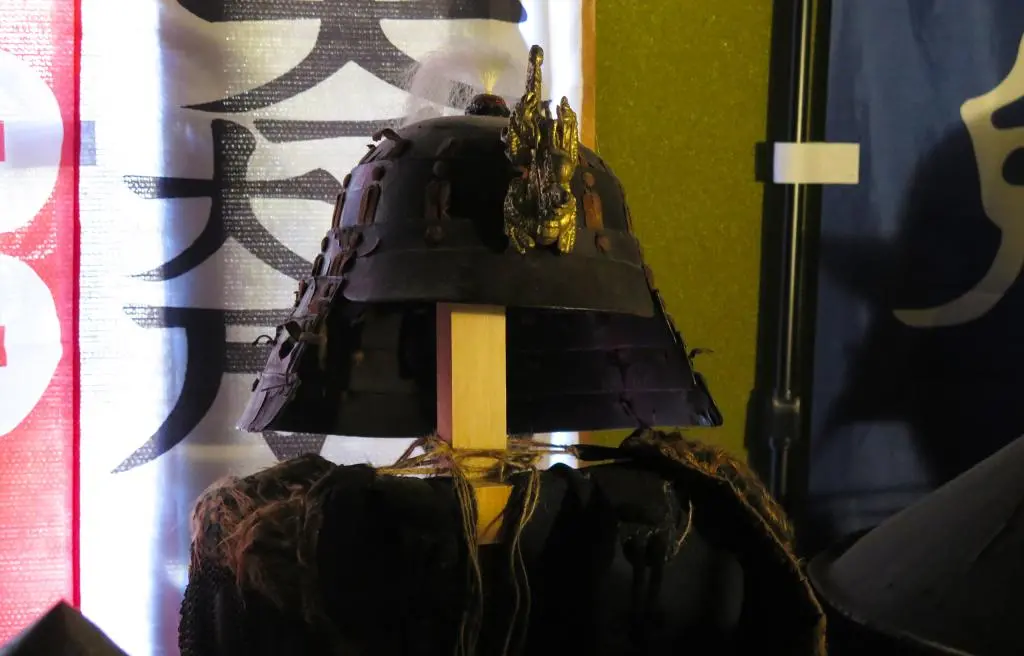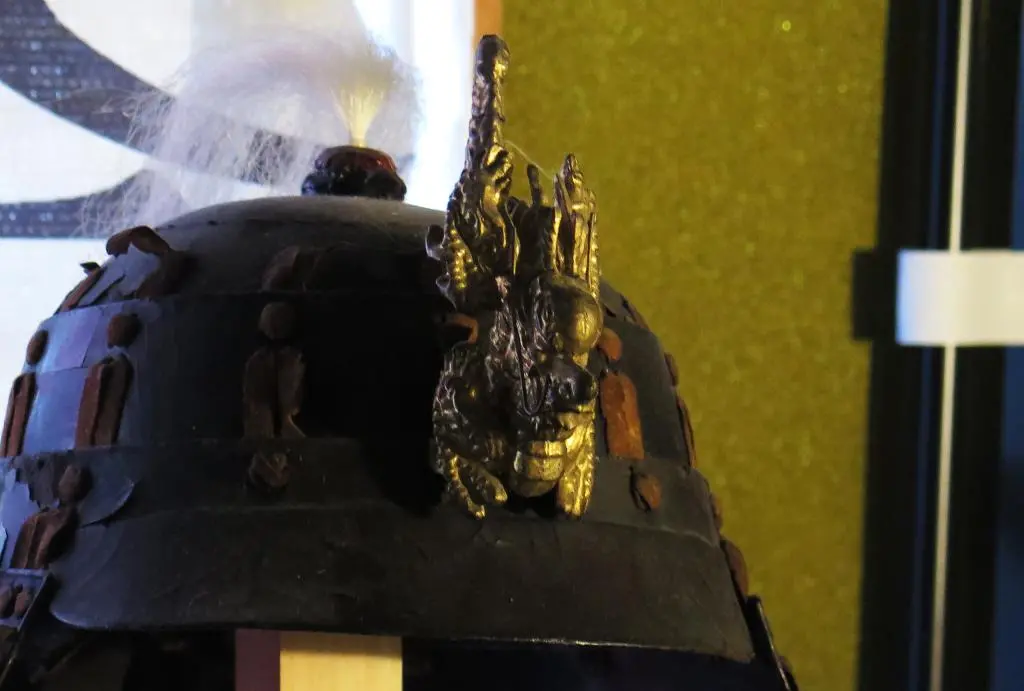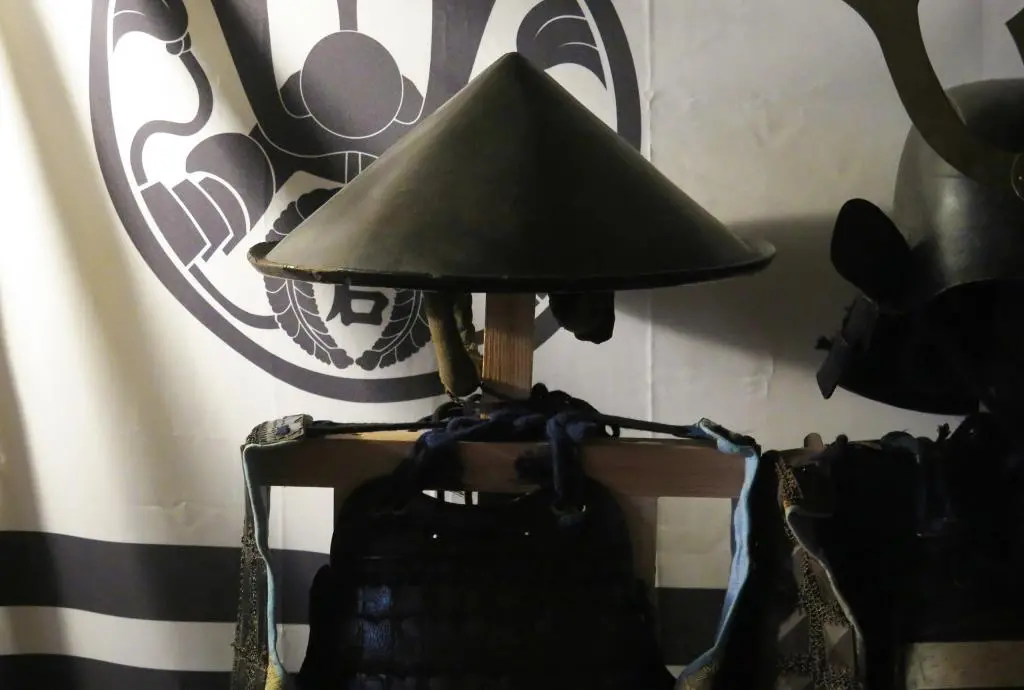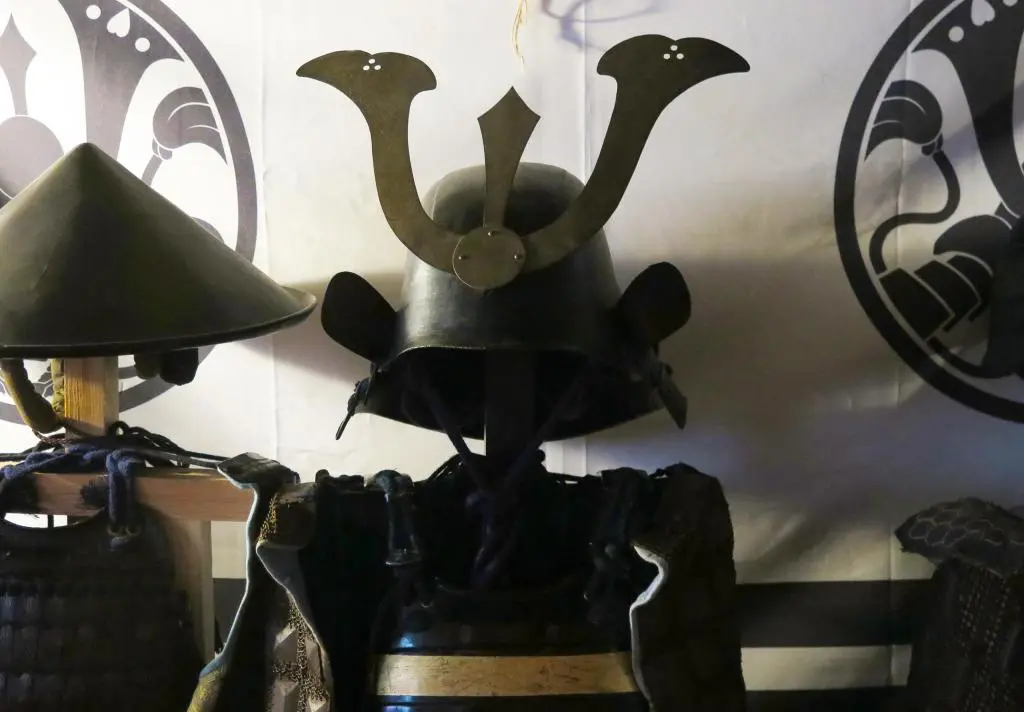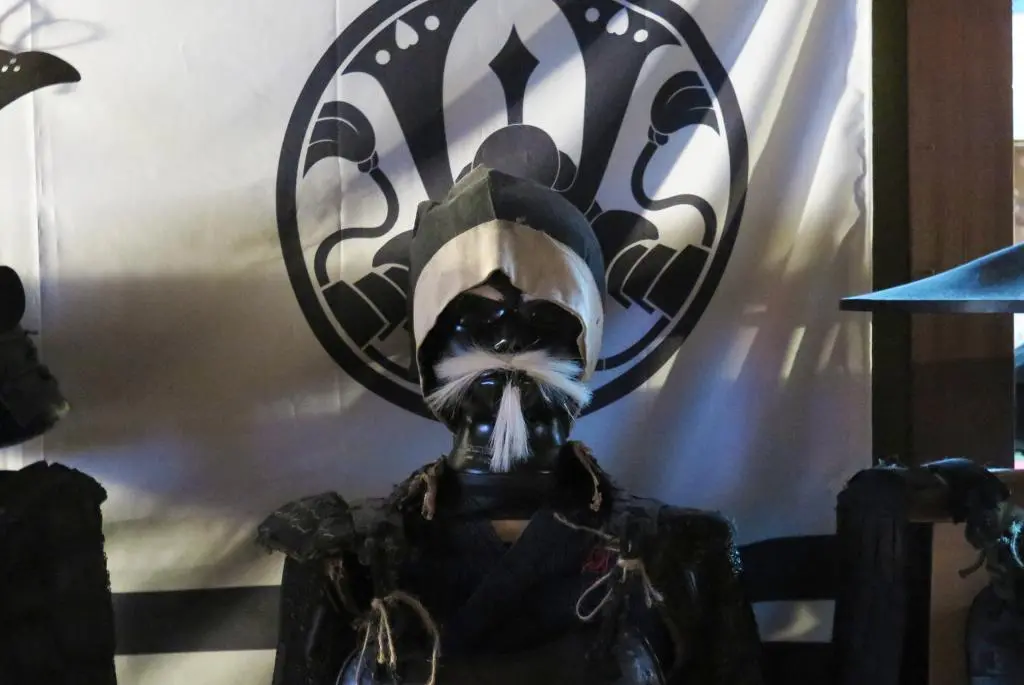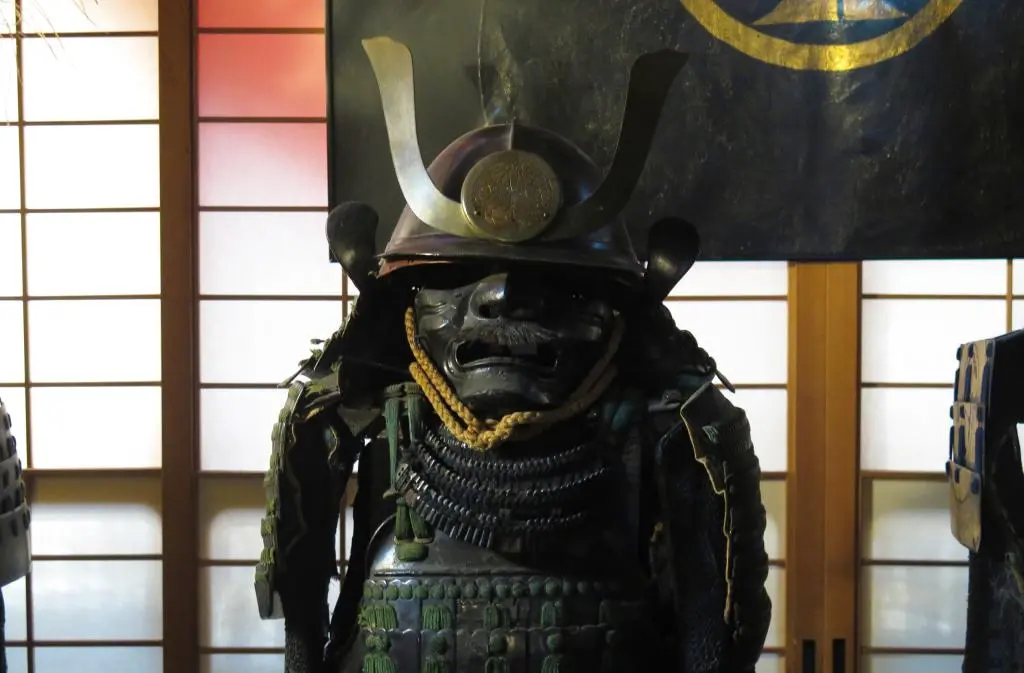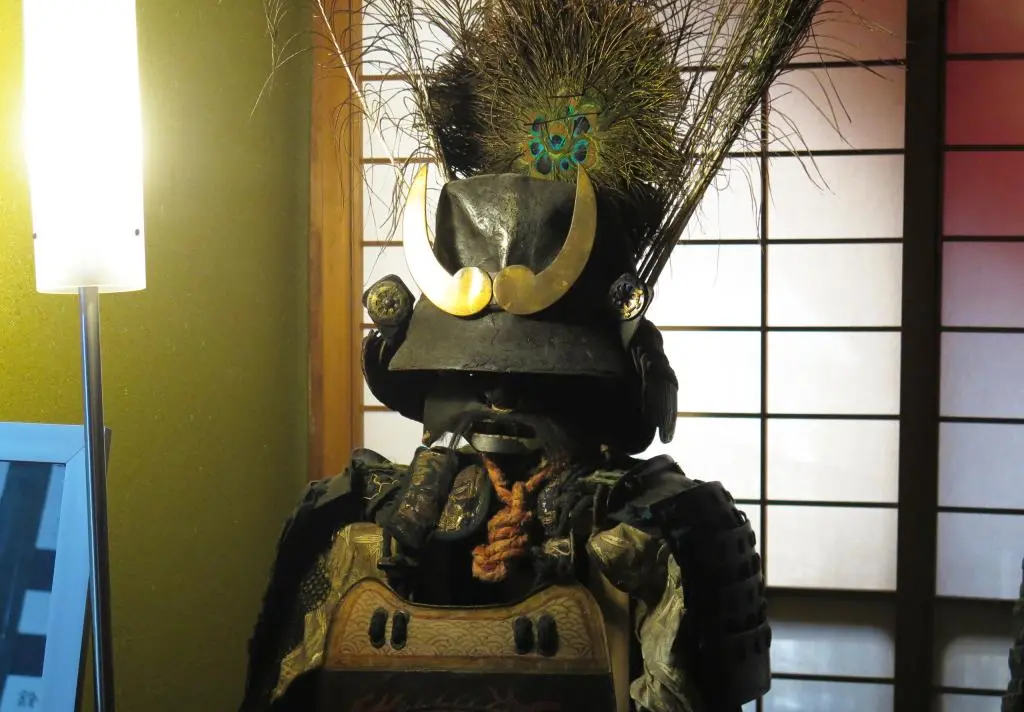The Sengoku Armor Museum in Sekigahara is a private collection of real samurai armor. Often museums and other exhibits will use replicas or recreations of the original armor. The owner of this collection only collects and restores original pieces from the Battle of Sekigahara and the Sengoku period in general. Several of the pieces were owned by major lords in the battle, but not necessrily worn in the battle itself. Many of the other pieces were worn by soldiers in the battle, some of which were killed.
The museum is just north of the main Battle of Sekigahara museum, and currently only takes reservations to view the collection. I emailed the owner the day before visiting, and he replied later in the evening saying I was all set to visit.
Viewing the collection is 800円, but you could pay more for detailed lectures about each of his pieces and also try on some armor, if you're small enough. There's also an attached shop with some exclusive Sekigahara merch, and a small restaurant where the family will cook an "authentic" samurai meal for you. They also have a pet duck. :)
I was only interested in the armor for this visit, but next time I think I'll go for the lectural experience.
Immediately to the right after reception were 9 sets of armor, mostly consisting of foot soldiers. I'm not sure if any of these were used in the Battle of Sekigahara. In fact, the emblem above the middle set of armor is of the Fujiwara clan, which never participated in the battle.
The Fujiwara clan rose to power in the 800s, but another 800 years later at the time of the Battle, I think the clan had mostly been divided and renamed into other factions and eventually bred out of existance. One of their military branches was renamed the Monnashi clan, which did participate in the battle within Tokugawa's Eastern Army.
The flags in the back have the Ishida emblem on them, and the front foot soldier helmets have 石 ishi written on them, so maybe those are some of Ishida's men? Although, they fought for the Western Army. Somewhat confusing.
Displayed on tables on the sides of the entrance were assorted pieces of armor used in the battle. The owner noted that some of the pieces had dried blood on them.
In his main room, there were around 25 sets of armor, many of which were related to the lords of the Battle of Sekigahara. He said it was alright if I took some photos, but his workshop with armor currently being restored was off limits.
One of the first sections was devoted to Ukita Hideie 宇喜多秀家 and his army. The main armor in the back was samurai armor owned by the Ukita clan at the time of the Battle. It's most likely not the armor he wore in the Battle, but it was armor he owned at that time. In the front are two sets of army from soldiers in his army. They are distinctly recognizable because of the Ukita clan emblems.
Ukita was one of the members of the Council of Five Regeants after Toyotomi passed away. He was very close to Toyotomi, so it was natural that he sided with Ishida against Tokugawa. One year after Toyotomi's death, there was an internal rebellion in the Ukita clan which resulted in several key members leaving to join Tokugawa. His army was slightly diminished but was still the largest army within the overall Western Army.
He survived the Battle of Sekigahara, although most of his army did not. He went into hiding, but was eventually captured and exiled to Hachijo-jima, a tiny volcanic island in the middle of the Pacific.
Next is armor previously owned by the Otani clan. Otani Yoshitsugu 大谷吉継 was a close friend of Ishida. He was also fiercely loyal and honorable. Despite being inflicted with harsh illness which blinded him, he still brought his army to Sekigahara to fight with Ishida against Tokugawa.
Unfortunately, his army was completely overrun when Kobayakawa defected to the Eastern Army in the middle of battle and attacked his army. They were completely overwhelmed, and thus, Otani committed seppuku to avoid capture and also to show his loyalty to the Western Army. His retainers took and hid his head and armor, so the Eastern Army could not have the satisfcation of his defeat.
The above armor belonged to the Maeda family. Maeda Toshiie 前田利家 was appointed as one of the Five Regeants after Toyotomi's death. Unfortunately, Maeda was also not in the best of health and died a year later. His son, Maeda Toshinaga 前田利長 succeded him, but fell into a political trap set by Tokugawa. As such, Maeda could not stand against Tokugawa and he fought for the Eastern Army.
Next is armor from the Mori clan. Mori Terumoto 毛利輝元 was also one of the Five Regeants and pledged his support with Ishida in the Western Army. Mori's army was stationed in the east of the battlefield, and meant to swoop in behind Tokugawa's army and pincer them. However, when he was signaled to attack, he did nothing. After seeing the tide of battle shift heavily against the Western Army, he refused to attack and stayed neutral, sparing his men.
He political standing was diminished after the battle by 75%, but faithfully assisted the Tokugawa Shogunate years after the battle.
Next, we have armor of the Shimidzu clan. Shimadzu Yoshihiro 島津義弘 and nephew Shimadzu Toyohisa 島津豊久 were leaders who supported the Western Army. Their numbers were few, but had a fierce honorable spirit. After the battle had been lost, they refused to turn their backs to the enemy. In order to retreat, they ran a final assault on the front lines of the Eastern Army, breaking through, and continuing to escape to the south. Nephew Toyohisa did not survive the escape.
There were more pieces of armor at the end of the room, but I have trouble identifying which armies they belong to. Some of the armor is pretty distinct, but there really isn't an easy guide to follow for identifying them. I should've taken notes or asked the owner about them, but I hadn't researched anything before visiting.
These last sets of armor were back near the entrance of the room. I think he mentioned that all of these armor belonged to members of the Tokugawa clan, which makes sense given the above emblem. Tokugawa Ieyasu 徳川家康 was one of the members of the Five Regeants and the key agitator which led to the Battle of Sekigahara.
While TV shows and history sometimes paint him as a glorious unifier of Japan, he is incredibly cold, manipulative, and constantly schemes against his rivals. Immediately after Toyotomi's death, he began scheming a series of marriage pacts to increase his standing, something which was strictly forbidden by Toyotomi. He used other political schemes to blackmail other lords into fighting for him. Any opportunity to increase his standing or decrease the standing of another was immediately taken.
While it seemed like many people hated the outspoken, garish attitude of Ishida, they hated Tokugawa more. Ishida went to war with Tokugawa to preserve the ideals set forth by Toyotomi. Everyone loyal to the deceased unifier of Japan held their ground, but were ultimately overpowered by Tokugawa's influence and strength.
After the battle, everyone loyal to Toyotomi was either executed, exiled, or significantly diminished. With full control of the government, Tokugawa banned weapons, shut down the country, and put to death anyone who would continue to oppose him.
On one hand, he was a harsh dictator that people secretly hated and feared. On the other hand, his rule set Japan on a course of extreme prosperity the country had never seen before. The population exploded, literacy exploded, and culture exploded. Japan became a modern beacon of the world, which became quite popular in Europe.
Having better knowledge of the battle and those involved, next time I go back to the museum, I'll have a better idea of what to ask about the armor and be in a better place to take notes.
The museum itself is really small. Again, calling it a collection is a better term, but it's still a worthwhile visit. The owner speaks English pretty well, so it's easy to have a conversation and talk about the armor and the battle in detail.
